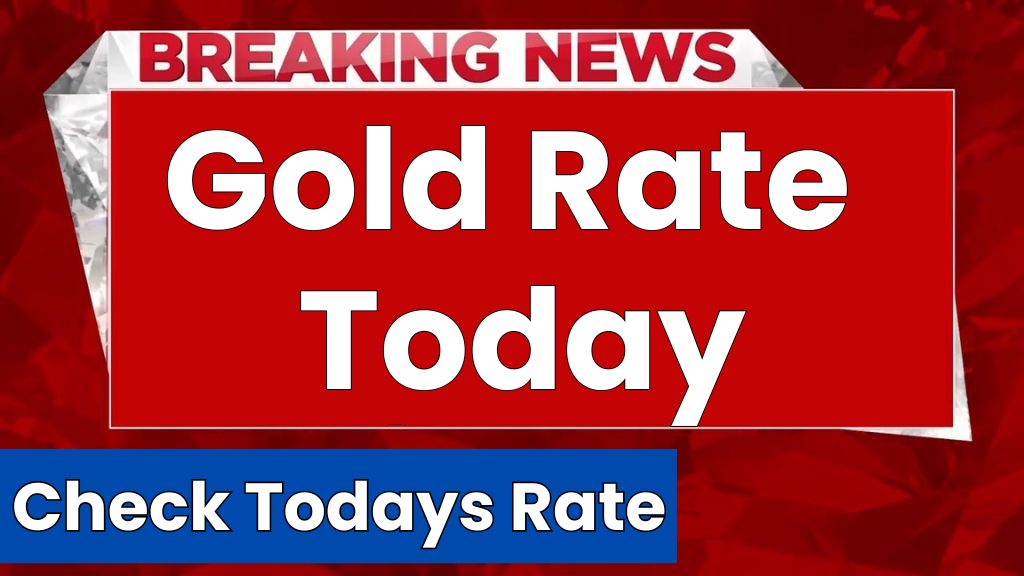The price of gold has surged to an all-time high, crossing the critical psychological barrier of ₹83,100 per 10 grams in India. On Friday, the precious metal gained ₹200 over Thursday’s closing price of ₹82,900, extending its rally for the eighth consecutive session. This historic high is being attributed to mounting uncertainties around the global economic landscape, particularly tied to the Trump administration’s evolving tariff policies, as well as increased global investment demand for the yellow metal.
The rise in gold prices is not an isolated trend. Silver also saw a notable jump, trading at ₹93,500 per kilogram—an increase of ₹500 compared to the previous day. This spike is part of a larger pattern that has defined gold and silver markets globally, especially in the wake of sustained geopolitical and economic uncertainty.
Gold’s Performance in 2024: A Historic Year
The World Gold Council (WGC) noted that 2024 was a banner year for gold, marking its best annual performance in over a decade. Prices increased by more than 28% year-to-date in U.S. dollars by December 13, 2024, significantly outpacing major asset classes. Gold’s average price for the year was 22% higher than in 2023, reflecting a growing reliance on the metal as a safe haven during economic turbulence.
Factors Driving Gold’s Exceptional 2024 Performance:
- Geopolitical Risks: Escalating tensions across global markets led investors to seek safe-haven assets.
- Central Bank Activity: Central banks, particularly in emerging economies, significantly increased their gold reserves, boosting demand.
- Interest Rate Cuts: Central banks globally adopted dovish monetary policies, which reduced the opportunity cost of holding non-yielding assets like gold.
- Investor Demand: Western investors returned to gold through over-the-counter transactions and exchange-traded funds (ETFs).
Why Is Gold Soaring Now?
The current rally in gold prices is fueled by uncertainty surrounding international trade policies, particularly the Trump administration’s approach to tariffs. This uncertainty is pushing investors toward safe-haven assets, especially as markets remain volatile. Gold, known for retaining its value during turbulent times, is seen as a hedge against potential economic downturns.
Key Drivers of the January 2025 Gold Surge:
- Geopolitical and Economic Uncertainty: Concerns over trade policies and global economic performance have renewed interest in gold.
- Central Bank Purchases: Continued gold-buying by central banks, particularly in Asia, has provided additional momentum.
- Inflation Concerns: Rising inflation in some regions has made gold an attractive store of value.
- Weakened Dollar: A softer U.S. dollar has further boosted gold prices, as the metal becomes cheaper for holders of other currencies.
Gold and Silver Price Comparison Table
Here’s a detailed breakdown of gold and silver price trends in India over the past week:
| Date | Gold Price (₹/10g) | Silver Price (₹/kg) |
| January 18, 2025 | ₹81,300 | ₹91,500 |
| January 19, 2025 | ₹81,800 | ₹91,800 |
| January 20, 2025 | ₹82,200 | ₹92,100 |
| January 21, 2025 | ₹82,400 | ₹92,400 |
| January 22, 2025 | ₹82,600 | ₹92,800 |
| January 23, 2025 | ₹82,900 | ₹93,000 |
| January 24, 2025 | ₹83,100 | ₹93,500 |
The steady climb in prices underscores the increasing demand for these precious metals, driven by investor concerns and global economic conditions.
Expert Opinions: What’s Next for Gold in 2025?
While the record-breaking rally has investors excited, experts caution that gold’s performance in 2025 may be more nuanced. According to Juan Carlos Artigas, Global Head of Research at the World Gold Council, gold’s journey in 2025 will be shaped by a complex mix of factors, including fiscal policies, geopolitical developments, and market volatility.
Predictions for Gold in 2025:
- Two Halves of the Year: Artigas predicts that the first half of the year will see heightened market uncertainty, keeping gold demand strong. The latter half, however, may witness more stability, potentially slowing the rally.
- Interest Rates and Volatility: Any significant drop in global interest rates or increased volatility could act as catalysts for further price increases.
- Asian Markets: India and China, which account for over 60% of annual gold demand (excluding central banks), will continue to play a pivotal role in shaping prices.
- Central Bank Activity: Sustained buying by central banks, especially in emerging markets, is expected to provide a strong floor for gold prices.
The Impact of Trump’s Trade Policies on Gold Markets
One of the key contributors to gold’s recent rally is the uncertainty surrounding the Trump administration’s trade and tariff policies. As these policies continue to disrupt global trade flows, they are amplifying market volatility. Investors are responding by reallocating assets to safer options like gold, which is traditionally viewed as a hedge against economic instability.
The Broader Economic Context
The gold rally is unfolding against the backdrop of a shifting global economic landscape. As central banks navigate complex fiscal challenges, including inflation control and currency stabilization, gold has emerged as a reliable asset for both institutional and individual investors. This trend is particularly evident in emerging markets, where central banks have ramped up gold purchases to diversify reserves and mitigate risks tied to global currencies.
India: A Key Market for Gold
India, one of the largest consumers of gold globally, is playing a significant role in driving demand. Gold holds deep cultural and economic significance in the country, where it is often seen as a symbol of wealth and a secure investment.
Factors Driving Gold Demand in India:
- Cultural Traditions: Weddings and festivals fuel consistent demand for gold jewelry.
- Investment Appetite: Indian investors see gold as a hedge against inflation and currency depreciation.
- Rural Demand: A significant portion of India’s gold consumption comes from rural areas, where gold is often used as a store of value.
Silver: Riding the Coattails of Gold
While gold is stealing the spotlight, silver is also seeing a significant uptick. Often referred to as “the poor man’s gold,” silver is benefiting from many of the same market dynamics, including increased industrial demand and investor interest.
Conclusion
The ongoing rally in gold prices is a reflection of global uncertainty and shifting investor preferences. As the world grapples with complex geopolitical and economic challenges, gold’s role as a safe-haven asset has never been more evident.
For investors, the current surge represents an opportunity to diversify portfolios and hedge against potential risks. However, as experts like Juan Carlos Artigas suggest, the second half of 2025 may bring more clarity, potentially altering the trajectory of gold’s performance.
With gold hitting unprecedented highs, the focus now shifts to how global economic and fiscal policies will shape its future. For now, one thing is clear: gold’s glitter is here to stay.
Disclaimer: The above article is based on market analysis and expert opinions. Actual market conditions and prices may vary.





